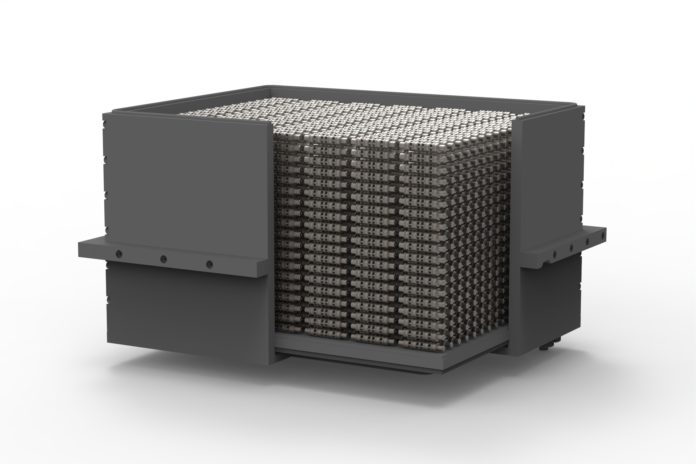Additive Manufacturing Company Desktop Metal has announced that nickel alloy IN625 (IN625) can now be effectively used on its Production SystemTM platform – an AM system that leverages the manufacturer’s patent pending Single Pass JettingTM (SPJ) technology.
The newly qualified material completes a portfolio that already includes 4140 low-alloy steel and Sinterable 6061 Aluminum – also qualified this year.
The nickel-chromium superalloy
Acknowledged for strength, resistance to corrosion and oxidation, excellent weldability, and ability to withstand extreme, elevated temperatures for parts under load, IN625 is a material that has been qualified in compliance with ASTM testing requirements.
It is designed to meet the manufacturing requirements of aerospace, marine, power generation, and chemical processing applications.
“As a transformative combustion equipment company, we are very excited about the release of IN625 for its high temperature and corrosion-resistant properties in flaring and sulfur incineration applications,” comments Jason Harjo, Director, Mechanical & Electrical Design (Americas), Koch Engineered Solutions. “This will give us much more flexibility in innovative, additive manufacturing designs for some of our most difficult applications.”
Examples of applications that have already been achieved with IN625 include a hydraulic spool, a turbine blade, a valve plug, an internal combustion block or a four-way valve housing.
According to the company, IN625 parts printed on the Production System platform not only eliminate the use of tooling and minimize material waste, but also represent a significant decrease in production time and part cost compared to conventional manufacturing methods.
Taking the example of turbine blades – critical components used in gas or steam turbines in the aerospace industry, the manufacturer explains that blades are some of the most challenging components to mass produce due to their complex geometries, including organic curves that optimize aerodynamics, and complex cooling channels that ensure the blades maintain an optimal temperature.
The Production System enables 3D printing of such geometries, which would otherwise be challenging to produce using traditional manufacturing methods and require advanced casting and machining techniques. Lastly, IN625 is an ideal material for these blades because of its high tensile, creep, and rupture strength, fatigue and thermal-fatigue strength, and corrosion resistance.
In the same vein, hydraulic spools are a key oil & gas application that assist in adjusting the flow rates of control valves. IN625 is an essential material for these spools to ensure longevity and withstand highly corrosive environments in oil & gas. When produced using traditional manufacturing methods, the spool must typically be assembled from several machined components. With Production System technology, each hydraulic spool can be consolidated and printed as a single part instead of multiple components, significantly reducing the assembly labour costs as thousands can be printed at once with no user input.
Remember, you can post free of charge job opportunities in the AM Industry on 3D ADEPT Media or look for a job via our job board. Make sure to follow us on our social networks and subscribe to our weekly newsletter : Facebook, Twitter, LinkedIn & Instagram ! If you want to be featured in the next issue of our digital magazine or if you hear a story that needs to be heard, make sure to send it to contact@3dadept.com






